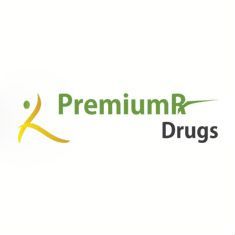Acnesol Gel 1% (20gm)
| SKU | 254 |
|---|---|
| Generic For | Cleocin T |
| Strength | 1% (20gm) |
| Manufacturer | Systopic |
| Active Ingredient | Clindamycin |
| Pack Size | Qty | Price Per Pill or Unit | Price | Cart | |
|---|---|---|---|---|---|
| 1 Tube/s | US$ 5.00 | US$ 5.00 | |||
|
|||||
| 3 Tube/s | US$ 4.00 | US$ 12.0020%US$ 15.00 | |||
|
|||||
| 6 Tube/s | US$ 3.75 | US$ 22.5025%US$ 30.00 | |||
|
|||||
Acnesol gel 1% contains Clindamycin, an antibiotic agent useful for treating several bacterial infections. It treats acne vulgaris, typically suppressing cutaneous Propionibacterium acnes (a gram-positive human skin commensal involved in acne's pathogenesis). Acnesol gel may also be used for other health conditions not mentioned on this page.
Acnesol gel is indicated for topical application in the treatment of acne vulgaris in patients 12 years of age and older. Acne vulgaris is characterised by areas of pimples, whiteheads, blackheads, and greasy skin and may result in scarring. It occurs when the skin pores become clogged with dead skin cells and sebum.
Clindamycin, a semisynthetic derivative of lincomycin, reveals potent activity against gram-negative and gram-positive bacterial infections. The drug inhibits bacterial protein synthesis, thereby stopping bacterial growth.
Precaution and warnings of Acnesol gel 1%
- Concurrent use of topical medications containing alcohol should be avoided because they potentiate drying action on the skin. The solvent contained in some medicated soaps, abrasive cleansers, or cosmetics is alcoholic. They may cause a cumulative irritant effect in individuals undergoing Acnesol 1% gel treatment.
- Topical acne medications containing benzoyl peroxide, tretinoin, salicylic acid, or resorcinol may sensitize the skin to unwanted reactions. Concurrent use of Acnesol 1% gel and these abrasive agents should be cautiously treated in combination therapy.
- Keep a list of all your topical agents and give it to your physician. Also, do not start new prescriptions, herbal products, over-the-counter medicines, and dietary supplements without telling your physician.
Side effects of Acnesol gel?
Some of the common side effects of Acnesol 1% gel may include:
- Burning
- Itching
- Dryness
- Skin peeling
- Oily skin
If these side effects persist longer, stop applying for the medicine and seek immediate medical help. Other side effects not mentioned above may occur in some patients. Inform your physician if you observe anything that is making you feel unwell.
How to use Acnesol 1% ?
- Acnesol 1% gel is for external use only and is applied directly to the skin. Before applying the gel, wash your face with a mild soap and lukewarm water. Apply a thin layer directly to each acne lesion or to affected areas. Rub it well into the skin. Don't forget to wash your hands properly after the application.
- The topical medication is usually applied to the affected areas twice daily. The frequency will depend upon the severity of the condition and skin tolerance, but it should not be more than twice a day. Acne treatment should be individualized according to the type of lesions predominate and the response to treatment.
- Don't let this topical medication contact the delicate parts of your face like eyes, nose, or lips. Wash them thoroughly with water if they are exposed to the medication accidentally.
- Patients treated with Acnesol 1% gel acne treatment may use cosmetics, but the affected area to be treated should be cleansed thoroughly before the medicine is applied.
- Don't apply this formulation in more than the prescribed quantity; doing this can cause skin irritation rather than treating it early.
- A decrease in inflammatory lesions should be noticed after two to six weeks, but more than eight weeks of treatment may be required before any definite beneficial effects are seen. Call your physician if your condition still does not improve after this time.
- Always remember to use Acnesol 1% gel on time. If you miss a dose, use it as soon as you remember.
- The contents of Acnesol 1% gel are flammable, so keep the medicine away from heat and flame. Store the gel at room temperature, and do not freeze it. Also, keep it out of the reach of children and away from pets.










Login
Sign Up
Login
Sign Up